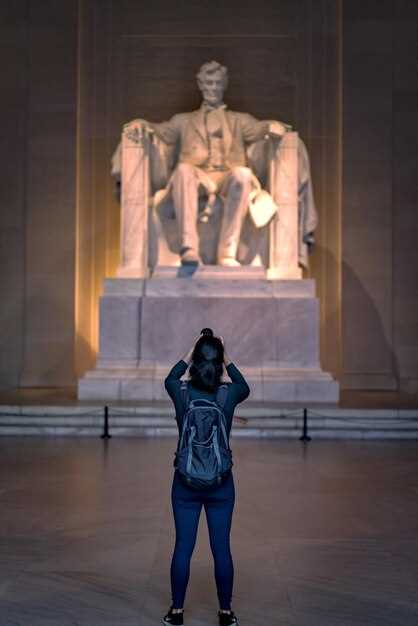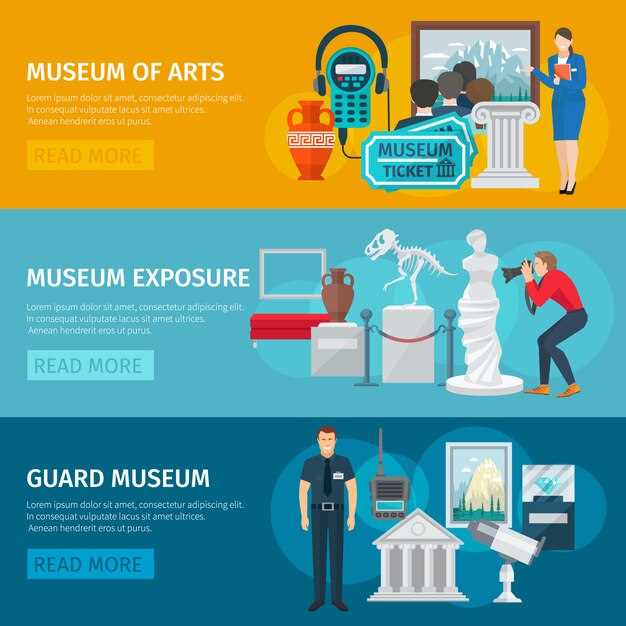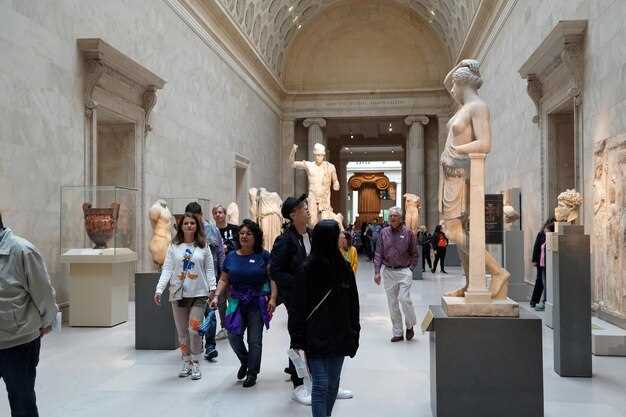
Plan your next city break around free-entry museums and book a slot online to secure a smooth start. For adults who love culture, a well-chosen visit can reveal a full spectrum of art, science, and history without a ticket.
Across continents, major institutions offer permanent collections with no charge to enter. In Washington, DC, the Smithsonian complex holds vast galleries spanning natural history, air and space, and art; in Europe, the British Museum and Tate Modern provide free general admission for their permanent displays. Look for free-entry options on your travel dates and use the online booking pages to avoid lines.
Beyond the biggest capitals, regional museums frequently open their doors to the public at no cost during specific hours. Check the official sites for opening days and hours, and explore listed programs that often include family workshops, guided tours, and exhibitions accessible without extra tickets. Planning a route around historic parts of a city lets you soak up culture without stretching your budget.
As you assemble your itinerary, aim for a mix of art, science, and local heritage. Free-entry museums often rotate displays, so revisit on different days to see fresh highlights. With thoughtful planning and booking, you can enjoy fantastic experiences that resonate long after your visit.
Global Free Admission Museums: Practical Guide
Begin your global free-entry tour at the Smithsonian in Washington, DC, where admission is free for visitors of all ages and the ground floors reveal everything from dinosaurs to rockets. I recommend spending at least three hours here.
Across the Atlantic, five places offer free permanent collections: the British Museum, the National Gallery, Tate Modern, Tate Britain, and the Victoria and Albert Museum in London. Many of these institutions began with kings funding education for the public.
These venues host thousands of pieces and tell powerful stories about cultures, science, and design.
Whats on the calendar matters: check whats free on the days you plan to visit, especially for evening hours or special exhibitions.
To maximize value, arrive early and map a simple route that covers at least five places in one city. If you’re a tourist, this plan helps.
Pair museum time with a garden stroll or a quick bite of local food afterwards; many neighborhoods offer casual options near the museums.
For families and lovers of storytelling, look for plays and stories programs that often run in foyer spaces or courtyards.
theres always a way to balance culture and cost: bring a reusable water bottle, a light snack, and a plan that focuses on free hours rather than paid ticket windows.
In Skeppsholmen, swedish venues frame your day with ocean air and flexible schedules that often include free events.
Five practical tips help you maximize value in any city.
Summer weekends bring extended hours in many cities; check whether landmark museums maintain free days. Some venues sit near a tower, offering a quick architectural pause.
Lovers of culture will leave with a whole sense of place and incredible memories.
What counts as free entry: general admission versus special events and temporary exhibitions
General admission often covers the permanent collection and public spaces, and many museums offer free entry for everyone on certain days or as a standing policy. When you plan trips, verify whether the free entry includes the full experience or just the galleries, and whether a temporary exhibition needs a separate ticket. If you’ve visited a city before, you know how free-entry policies shape your day.
The nature of free entry varies by museum. The concept consists of two layers created by many institutions: general admission and paid add-ons. General admission usually consists of access to the regular, permanent collection and public areas. Special events and temporary exhibitions are typically ticketed, with possible discounts for students, seniors, or members. theres no universal rule, so always check the museum’s site or call ahead.
- General admission: what it covers. It typically includes access to the main galleries and historic rooms; some venues also allow access to outdoor spaces like gardens. If a free entry day exists, you will see “free for all visitors” online. Plan to arrive early to make the most of daylight and spend a few hours exploring; you may want to bring a book or notes for context.
- Special events and temporary exhibitions: tickets and access. These exhibits sit beyond the permanent collection and require a separate ticket or a timed entry. Book in advance to save time; check for combined tickets or late-night options. If you are interested, read labels and catalogs to gain insights, and you may find related books in the lobby. Some events include music or talks, which add texture to a visit.
- How to plan and maximize value. Start with the official program page, look for free entry or family passes, and consider a research-minded approach to your day. If a museum is free on a given day, arrive early to beat crowds; for major exhibitions, quick tickets help you avoid long lines. You can pair a museum visit with a stroll through nearby swedish historic precincts, including gustav apartments, to see the worlds of art and daily life. Save time and money by checking restaurants or cafés ahead or by reading guides in advance.
Where to find free days, hours, and seasonal promotions around the world
Start with a simple plan: pull the official calendars of museums and national galleries in the archipelago and beyond; many institutions designate free-entry days for the permanent collection, often funded by cultural recipients and partners. This approach lets you save while exploring famous artefacts and displays.
Research first: subscribe to museum newsletters, follow official social accounts, and use dedicated tourism sites that list free hours and seasonal promotions. In many places, cultural festivals trigger extra free hours, giving plenty of time to roam without pressure.
Choose zones where you can pair life-rich experiences: historic venues, exhibitions about royalty and artefacts from royalty, and popular galleries that host dolls, artefacts, and audio-guided tours. Some venues keep historic floors open on free days, with displays that reveal humanity.
Avoid rush: arrive before doors open, and use audio guides to navigate floors and displays. If you see crowds, move to adjacent spaces or outdoor courtyards and come back later for calmer views. If a specific exhibition requires a small fee, consider whether the purchase adds meaningful value.
Seasonal promotions pop up around holidays, harvest festivals, and national days; some museums offer free hours for residents, students, recipients of local grants, or winners of youth-arts contests. Check nearby cultural centers, historic districts, and cemetery-adjacent tours that pair artefacts with local lore; you’ll find plenty of opportunities to explore the life and culture of a region without spending much.
Keep a compact route plan: map the venues above and through the city, grouping free-entry days by district to minimize travel time. Note audio guides, displays, and artefacts that interest recipients and visitors, and you’ll save while sampling life stories across humanity. If you are a tourist, this approach helps maximize value.
Family, student, and senior programs that grant free access
Check museums that offer a family-friendly pass with free entry for kids and reduced or no cost for students and seniors. Build a quick list and plan visits around open days and summer events, so you can see several sites in one trip.
Today, Smithsonian museums in the United States provide free entry to all visitors, a fantastic option for families. You can depart after a short stroll through galleries, then read about the stories behind artefacts that span cultures. Some displays feature Picasso pieces alongside other modern works, and you may encounter Viking artefacts in current exhibitions. This kind of access helps lives change through exploration, not price.
Across Europe, many national museums keep the permanent collection open to everyone, with free entry on select days for residents, and free access for students with valid IDs and seniors on certain programs. Look for a combo pass that covers entry to multiple sites, and plan your route for a summer showcase of cultural artefacts, garden spaces, and kid-friendly stops.
For a local option, botkyrka and nearby venues often run free entry days for families, students, and seniors. Open hours vary, so today check the current schedule, then depart with a compact plan that would fit two or three venues above a single afternoon. Bring a light snack, depart with a few stories from the collections, and enjoy the garden after you walk through Picasso pieces or Viking artefacts. Sure, a well-chosen pass can save money, and entries through a flexible combo beat separate tickets until you find the right fit for your summer itineraries.
Fotografiska: three locations (Stockholm, New York, Tallinn) – pricing, hours, and free-entry opportunities

Definitely start with Fotografiska Stockholm for the biggest, most immersive introduction, then add New York and Tallinn for different city vibes and memory-rich experiences.
Stockholm: pricing starts at about 195 SEK for adults, with reduced rates around 150 SEK for students and seniors; children under 7 enter free, and a family ticket covers two adults plus kids. The exhibitions program includes a steady rotation, with 20th-century classics and contemporary looks that keep the memory of big names alive. The venue sits in a stylish building with garden terraces and a look that blends culture with art, offering fine cafes and a calm departure from the city bustle. Hours typically run from mid-morning to late afternoon, with Friday evenings often extended, so you can depart after sunset and still enjoy the rooftop views. Free-entry opportunities include free entry for Fotografiska Friends members at all times and occasional free-entry events for younger visitors, making it a strong option if you’re counting a budget-friendly day out. If you’re visiting in August, plan for longer weekend hours and special exhibitions that showcase famous photographers and immersive installations.
New York: pricing generally sits around $28 for adults, with reduced rates in the high teens or low 20s for students and seniors; children under 12 usually enter free, and members also gain free access. The NYC site keeps a fast-paced calendar of exhibitions focused on contemporary culture, music-inspired series, and iconic images that look bold in the gallery’s big, clean spaces. Hours tend to cover most afternoons into evenings, with extended hours on weekends to capture light and energy from the city’s big museum-going crowds. Free-entry opportunities center on Fotografiska Friends memberships and occasional community days, which are especially useful for winners of local programs or groups that depart for a shared visit. If you’re unsure about a weekday plan, a late afternoon visit often yields quieter galleries and a chance to catch the skyline from the cafe before you depart.
Tallinn: pricing is commonly around 12–14 EUR for adults, with reduced rates for students (roughly 8–10 EUR) and under-7s entering free; a family pass is a practical option for small groups. The Tallinn site blends Baltic culture with global photography, offering exhibitions that include both historic 20th-century work and contemporary, memory-rich series in a compact, immersive space. Hours typically run during the day, with occasional late openings on certain days in August or during festival periods. Free-entry opportunities include free access for children under 7 and occasional events where admission is waived, making Tallinn a cost-effective way to explore emerging, botanic memory-inspired imagery and coastal landscape photography. The venue’s architecture, while smaller than its siblings, still presents a fresh look at photography in a city castle-like setting, and you’ll find friendly staff and a calm garden-adjacent cafe to unwind after viewing the exhibitions.
Tips to maximize your visit: check the official pages for the latest hours and any special free-entry days, plan around the biggest exhibitions, and consider a combined ticket or membership if you expect multiple visits. Start with the Stockholm showings to cover the biggest collection first, then contrast with New York’s urban energy and Tallinn’s intimate, local vibe. Each site offers different, memorable opportunities to depart with new culture highlights, including a few must-see exhibitions and famous images that can define a trip.
Region-focused free-entry itineraries: Europe, North America, and beyond

Recommendation: start in London to maximize free-entry options, youre surrounded by artefacts and costumes, including the Rosetta Stone, across eras in the British Museum, Tate Modern, Natural History Museum, and V&A, especially in summer.
Think of it as a starter loop for your route.
From London, Europe expands to Paris, where Petit Palais offers a free permanent collection and other venues provide similar access. In England, you can compare early english history with continental styles, with artefacts linked to alfred in English collections. Advance planning helps you map a tight route and early openings.
In North America, Washington, DC hosts the Smithsonian museums, all with free admission. You can cluster five venues in a single day, exploring natural history halls, space galleries, and American history, with water features around the Mall scene and shaded courtyards that make a long afternoon comfortable.
Beyond, you can craft routes in other regions using botanic gardens and university galleries that open freely to the public. think of a longer loop by adding another city or a regional museum trip; youd have options to explore artefacts and english-language guides in diverse contexts, including local costumes, and a practical code of signs to follow.
| Regio | City / Area | Free-entry highlights | Notes |
|---|---|---|---|
| Europe | London | British Museum (permanent collection), Tate Modern, Natural History Museum, V&A | Arrive early; pair with a riverside walk by the Thames |
| Europe | Paris | Petit Palais (free permanent collection) | Plan a two-museum combo; nearby Seine walks |
| Noord-Amerika | Washington, DC | Smithsonian museums network (free admission) | Cluster five venues in one day; bring water |
| Beyond | Multiple locations | Botanic gardens and university galleries with free access | Check local calendars; english signage helps navigate |
